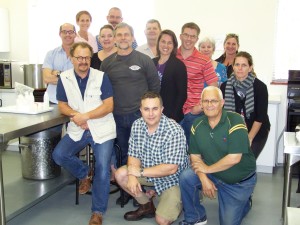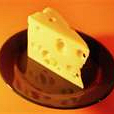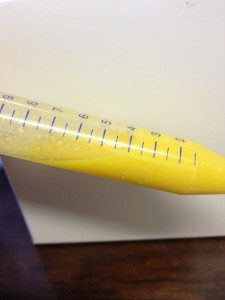Leon
Stellenbosch University Oct/Nov 2013 Cheese course
Successful cheese course! South Africa
Hi, Cheese fans
I just want to thank everybody that joined me on our latest cheese course in Stellenbosch. It was a wonderful experience to have fun with such a diversity of people with a unified interest in cheese making 🙂
If you are interested in cheese or yoghurt making courses in South Africa, mail to info@cheesemaking.co.za and ask us when we will be in your area.
Drink your milk!
regards,
Leon the Milkman
3VF7TJTZQZFT
FaceBook group
Please join us at our facebook group:
http://www.facebook.com/#!/groups/cheesemaking/
Regards,
Leon the Milkman
Place to stay for cheese makers
Hi, Cheese Enthusiast
If you are ever in South Africa in the Southern Cape, close to Riversdale or Stil Bay (Stilbaai) then pop over to stay at A Farm Story Guest House to experience real farm living. On the farm you are next to the dairy, there is a fully functional cheese factory and it is the point of the most Southern Battle in The Anglo-Boer War.
The house played an important part in the history of the Cape, as the stables were used as a hospital during the most southern battle in the Anglo- Boer war in 1902.
Go and check them out at www.afarmstory.co.za
http://www.youtube.com/watch?v=xrhUnPRu5xs
Cheers,
Leon the Milkman
Goodbye Tony :-(
Today I went to the funeral service of Antonio James Morrone. It was a sad day for the South African food and laboratory industry. As opposed to myself I have never heard this man say anything bad about someone else, even when listening to my rants! He was always full of concern and care for everyone else’s problems and glad to share in their joy. You could see the glint in his eyes in sharing his joy with everyone he met.
My thoughts are with his brother Michael and the rest of his family. You were all blessed with him, may you still be with him looking after you from above.
Tony we will see each other again one day – if we are too far to shake hands – wave at me and smile.
http://www.tridentinstrumentation.co.za/
Gouda wash water insight
Hi, Cheese Makers
Have you ever considered testing your normal rinse/wash water quality for gouda and other cheeses that get “washed”?
If not, maybe consider testing for more than the usual coliforms and yeast and mold. Also test pH, hardness, etc. We are so used to doing pH on the milk, but never the water – I have seen water used for wash water from 4.98 to 9.5. This will have some influence on your process and we should aim for 6 to 7 ideally. The water can easily be acidified with citric acid.
Any comments?
All the best,
Leon the Milkman
Dairy and Cheese Consultant
Cape Town, South Africa
Make your own gouda cheese:
http://cheesemaking.co.za/shop/home/17-big-cheese-making-kit-south-africa.html
How much mozzarella used in pizza shop?
Apparently – according to my sources – an average pizza shop uses about 500kg of mozzarella per week? Can anybody verify this?
Thanks,
Leon the Milkman
Alizarol SMS :-)
Client: Hi, Leon. This is an alizarol test
Leon: Super acid, do pH
Client: 6.7 pH. What does exactly mean acid? old?
Leon: Impossible, that yellow is acid milk. Could be old, or high bacterial load or chemical.
Client: OK, will check again.
Leon: Maybe used same container that citric acid was in? Must be some reason
Client: Hm! Well done! The container was the culprit! Thanks
Leon: 😉 good
Client: 🙂
May that be a lesson to you all, haha.
Out for now and have a great Monday,
Leon the Milkman
For online training with video on the alizarol test, that you can use to re-train or train new employees, please go to:
Back! :-)
Well, after losing my blog through some mistakes of mine and others, I am back blogging away to stay. Thanks for waiting 🙂
Thanks to Renier for putting the blog back up!
We’ll talk soon.
Leon the Milkman
Twitter Weekly Updates for 2010-11-09
- RT @mikefilsaime is having a Webinar Event this week. Make sure to make it. I'll be on! http://nowview.me/kLA2 #
Powered by Twitter Tools.




